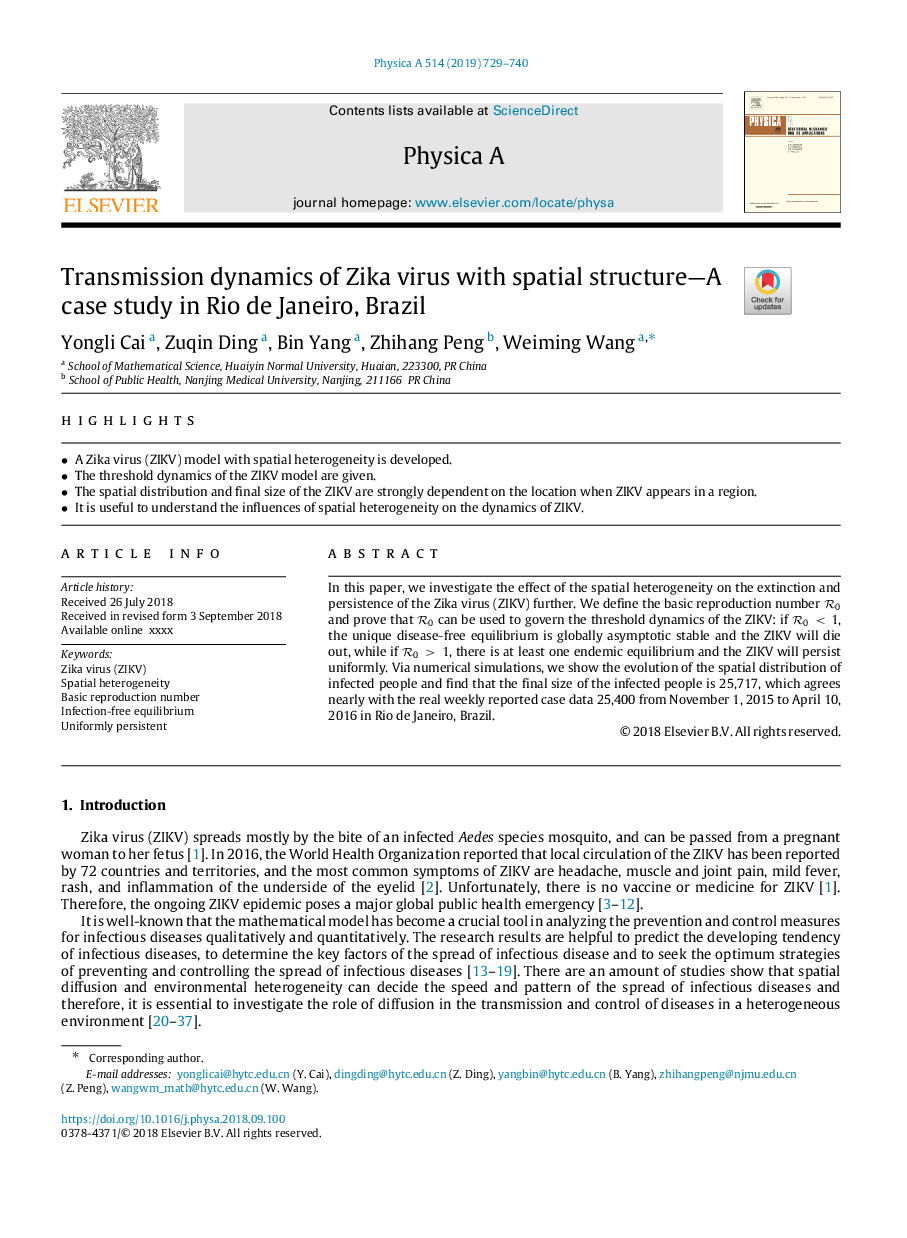| Article ID | Journal | Published Year | Pages | File Type |
|---|---|---|---|---|
| 11023302 | Physica A: Statistical Mechanics and its Applications | 2019 | 12 Pages |
Abstract
In this paper, we investigate the effect of the spatial heterogeneity on the extinction and persistence of the Zika virus (ZIKV) further. We define the basic reproduction number R0 and prove that R0 can be used to govern the threshold dynamics of the ZIKV: if R0<1, the unique disease-free equilibrium is globally asymptotic stable and the ZIKV will die out, while if R0>1, there is at least one endemic equilibrium and the ZIKV will persist uniformly. Via numerical simulations, we show the evolution of the spatial distribution of infected people and find that the final size of the infected people is 25,717, which agrees nearly with the real weekly reported case data 25,400 from November 1, 2015 to April 10, 2016 in Rio de Janeiro, Brazil.
Related Topics
Physical Sciences and Engineering
Mathematics
Mathematical Physics
Authors
Yongli Cai, Zuqin Ding, Bin Yang, Zhihang Peng, Weiming Wang,
